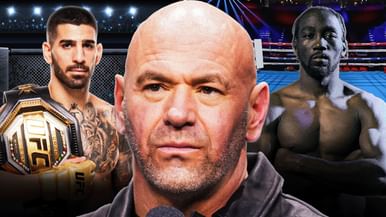#5 The Strikeforce buyout ends the era of competition
With both Elite XC and Affliction gone before the end of 2009, the UFC’s position at the top of the MMA world had never been stronger. One more competitor remained, though, and it was an unlikely one at that.
Scott Coker’s Strikeforce promotion had been going for many years and had actually been the first MMA organisation to put on an event in California, back in 2006. Dana White had even praised Coker for being a “smart promoter” who didn’t attempt to muscle in on the UFC’s territory at the top of the tree.
Get the latest updates on One Championship Rankings at Sportskeeda and more
In 2009, that all changed.
Not only did Strikeforce pick up the Showtime contract that had been left open when EXC closed shop, but they also began to sign some of the big free agents left out there when Affliction went under.
Andrei Arlovski, Robbie Lawler and Gilbert Melendez all found themselves under Coker’s banner, but the promotion really got onto the UFC’s radar when they swooped in to sign Fedor Emelianenko from under Zuffa’s nose in the summer of 2009, right after Affliction closed down.
Suddenly Dana no longer called Coker a smart promoter. Strikeforce was now ‘StrikeFarce’, and UFC star Dan Henderson hadn’t chosen to sign with them, it had only happened because Dana had allowed it. Or so Uncle Dana said.
By 2010, the future of StrikeForce seemed bright, but there were signs that things were going slightly awry – a deal with CBS in the same vein as Elite XC was torpedoed by the infamous ‘Nashville Brawl’, when the Diaz brothers jumped Mayhem Miller after Jake Shields’ fight with Dan Henderson.
And not long after, Fedor Emelianenko finally lost, submitted by Fabricio Werdum, to end his massive winning streak.
In general, though, the promotion seemed to be in good shape. People still cared about Fedor despite the loss and there was a big Heavyweight Grand Prix planned for 2011 that would possibly pit him against Alistair Overeem. And fighters like Overeem, Nick Diaz, and King Mo were looking like legitimate stars.
It was a total left-field surprise then when in March 2011, a low-key interview between Dana White and Ariel Helwani appeared online to announce that Zuffa had purchased Strikeforce.
The word was that the promotion was in some debt, and Coker’s financial backers Silicon Valley Sports and Entertainment simply wanted out of the MMA business and sold to the highest bidder.
In all honesty, I’m still not too sure of the details of the deal – I don’t think anyone is, as it came literally out of nowhere and took everyone by surprise.
At any rate, with the purchase, the chance of any other promotion toppling the UFC from their pedestal was dead; within two years of the purchase, Strikeforce was closed down, the promotion’s roster was amalgamated with the UFC’s, and MMA would no longer be broadcast by Showtime.
This one was maybe the most pivotal moment of all for the UFC.
Despite its deficiencies, Strikeforce was a genuine competitor for the UFC and since then, while Bellator seems to be picking up some momentum now, it doesn’t look like any other promotion can come close to the juggernaut, not even with some of the questionable decisions being made today by new owners WME-IMG.
March 12th, 2011 then goes down as perhaps the most important date in UFC history.
It’s strange that it would come almost ten years to the date when the then-WWF bought out WCW, because it signalled the same shift in the MMA world as that event did in the wrestling world – the moment when one promotion became impossible to topple from the peak of the mountain.
What other pivotal moments would you say lead to the UFC’s dominance? Tell us here.
Until next time...
Send us news tips at fightclub@sportskeeda.com

MMA vs. Boxing: The Ultimate Showdown!
